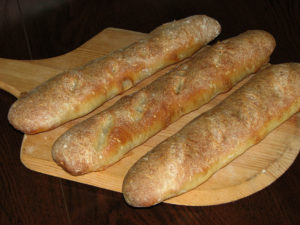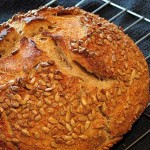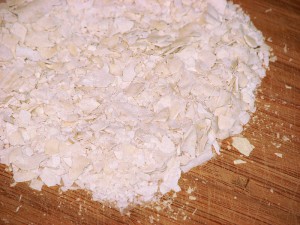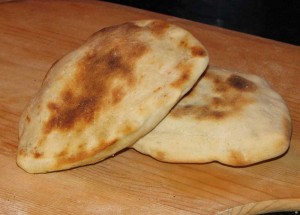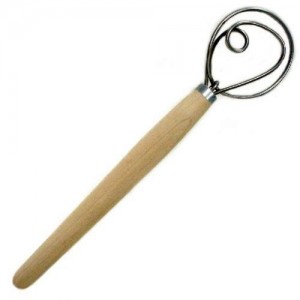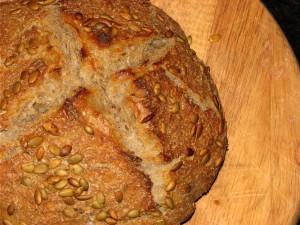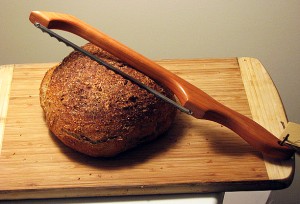 When you bake your own bread and love to eat it straight out of the oven, you know how hard it is to get a good, even slice from fresh-out-of-the-oven, warm bread. This Oregon Bread and Bagel Knife (another non-essential but really cool kitchen tool), made of Red Alder, a sustainable hardwood, has a beveled, scalloped edge (it never needs sharpening) that works like a super-sharp saw to cut a neat, uniform width slice of that crusty, aromatic freshly baked no-knead sourdough whole wheat pumpkin seed encrusted loaf that you can then slather in butter and watch as it melts into the nooks and crannies…ok, I’m getting a little carried away here, but there really is nothing better then homemade bread.
When you bake your own bread and love to eat it straight out of the oven, you know how hard it is to get a good, even slice from fresh-out-of-the-oven, warm bread. This Oregon Bread and Bagel Knife (another non-essential but really cool kitchen tool), made of Red Alder, a sustainable hardwood, has a beveled, scalloped edge (it never needs sharpening) that works like a super-sharp saw to cut a neat, uniform width slice of that crusty, aromatic freshly baked no-knead sourdough whole wheat pumpkin seed encrusted loaf that you can then slather in butter and watch as it melts into the nooks and crannies…ok, I’m getting a little carried away here, but there really is nothing better then homemade bread.
This knife is also perfect for cutting bagels, ripe tomatoes and just about anything else that you may have trouble slicing with a conventional knife…and, with the beautiful Red Alder handle, a hardwood that flourishes in the Pacific Northwest, it looks really great just sitting there on the kitchen counter or even hanging on your kitchen wall. It has an American-Made stainless steel blade that is double-ground, serrated & ultra-thin, the same blade that is used in industrial bread slicers that make thousands of slices a day.
This also makes a great gift for the cook who has everything…that’s how I got it (thanks Ned and Debi)!
